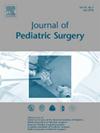Successful Treatment of Early Presenting Intussusception With a Single Dose of Corticosteroid: A Prospective Randomized Controlled Trial
IF 2.4
2区 医学
Q1 PEDIATRICS
引用次数: 0
Abstract
Introduction
To evaluate and compare the success rates of follow-up versus a single dose of corticosteroid (methylprednisolone) treatment in early-diagnosed intussusception cases to achieve resolution without the need for hydrostatic or pneumatic reduction and surgery.
Methods
This study was conducted as a prospective randomized controlled trial. Patients aged 0–4 years, admitted to the Pediatric Emergency Department with a history of symptoms less than 24 h diagnosed with intussusception by ultrasound were randomly assigned to two groups. The treatment group received a single intravenous dose of 1 mg/kg methylprednisolone, while the control group was followed without medication. Follow-up ultrasound was performed at a median of 4 h.
Results
The study included 60 patients in the steroid treatment group and 32 patients in the control group, with male-to-female ratio of 47:45 and a mean age of 28.3 ± 12.0 months. Ileoileal intussusceptions were more common in the control group (19/32, 59.4 %), while ileocolic intussusceptions were more frequent in the treatment group (22/60, 36.7 %) (p = 0.023). Steroid treatment was successful in 49 of 60 cases (81.7 %), whereas follow-up was successful in 18 of 32 cases (56.3 %). Overall, steroid treatment was significantly more successful (p = 0.009). For ileocolic intussusceptions, steroid treatment was successful in 17 of 22 cases (77.3 %), compared to 2 of 9 cases (22.2 %) in the control group (p = 0.012).
Conclusions
Single-dose steroid treatment is particularly effective for ileocolic intussusceptions presenting within 24 h. Steroid treatment may also be considered for unresolved ileoileal intussusception cases after initial follow-up.
The clinical trial registration number is NCT05640375 (clinicaltrials.gov).
求助全文
约1分钟内获得全文
求助全文
来源期刊
CiteScore
1.10
自引率
12.50%
发文量
569
审稿时长
38 days
期刊介绍:
The journal presents original contributions as well as a complete international abstracts section and other special departments to provide the most current source of information and references in pediatric surgery. The journal is based on the need to improve the surgical care of infants and children, not only through advances in physiology, pathology and surgical techniques, but also by attention to the unique emotional and physical needs of the young patient.

 求助内容:
求助内容: 应助结果提醒方式:
应助结果提醒方式:


